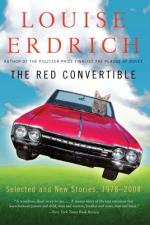|
This section contains 633 words (approx. 2 pages at 400 words per page) |

|
The Leap Summary & Study Guide Description
The Leap Summary & Study Guide includes comprehensive information and analysis to help you understand the book. This study guide contains the following sections:
This detailed literature summary also contains Quotes and a Free Quiz on The Leap by Louise Erdrich.
The following version of this story was used to create this guide: Erdrich, Louise. "The Leap." http://catherinedaigle.weebly.com/uploads/1/9/8/2/19823597/the_leap_full_text.pdf
Note that all parenthetical citations refer to the paragraph from which the quotation is taken.
"The Leap" is a short story about an unnamed woman's mother, Anna, and the choices that framed her past. It is told from the perspective of Anna's daughter, who lives with her aging mother in New Hampshire and attempts to remember her through stories about Anna's fantastic life as a young woman.
The story begins with the narrator announcing that her mother used to be part of a blindfolded trapeze act. Despite being blind in her old age, Anna is still able to walk through her house without knocking anything over or losing her balance. The narrator attributes her dexterity to her training as a trapeze artist. She says that she owes her existence to her mother for three particular events.
The first event occurred before the narrator was born. She explains that one day in June, Anna and her husband, Harold, were performing for a circus audience. Together they were known as the Flying Avalons. Anna was seven months pregnant at the time, but nobody knew. The Flying Avalons prepared to take the stage for their typical act, which usually included them flirting and kissing in midair. But as soon as their act began and both were suspended, lightening struck the tent. The narrator explains that while her mother could have chosen to grab her husband and go down with him, she moved in another direction, which ultimately saved her life. Harold died, as did Anna's unborn baby. The narrator notes that the baby is buried around the corner from their house in New Hampshire. When it snows, the narrator says she can pick out the child's gravestone from the road because it is shaped like "a lamb at rest" (12).
The narrator continues the story of her mother's near-fatal fall, and says that Anna met her next husband (the narrator's father) while recuperating in the hospital. He was a doctor, and he taught Anna – previously illiterate – how to read. "After that," the narrator says, "and for as long as I can remember, my mother has never been without a book" (15). The narrator explains that her father has recently died, and she moved home to New Hampshire to read to her blind mother. She notes that the coupling of her mother and father in the hospital is the second circumstance for which she owes her existence to her mother.
The story then shifts slightly to the narrator's own memory, as she recalls that she was seven years old when their house caught on fire. Her parents were not home, and the babysitter ran outside, leaving the narrator in her bedroom. She notes that there was only one staircase up to her room, and it had already been destroyed by the time the fire department arrived. She used the training she had had in school and felt the doorknob. Discovering that it was hot, she placed a rolled-up rug against the gap in the door. "I put on my flannel robe," she says, "and then I sat down to wait" (20). When her parents arrived, they and everyone else saw that the only way to the narrator's bedroom was from an extended but flimsy branch on the large elm tree next to the house. Anna stripped down to her underwear and her heels. She climbed the tree and catapulted into her daughter's room. After rescuing her daughter, Anna and the narrator leapt from the window toward the fire fighters' net. The narrator remembers being pressed so closely against her mother's chest that she could hear Anna's heart beating as they fell.
Read more from the Study Guide
|
This section contains 633 words (approx. 2 pages at 400 words per page) |

|



